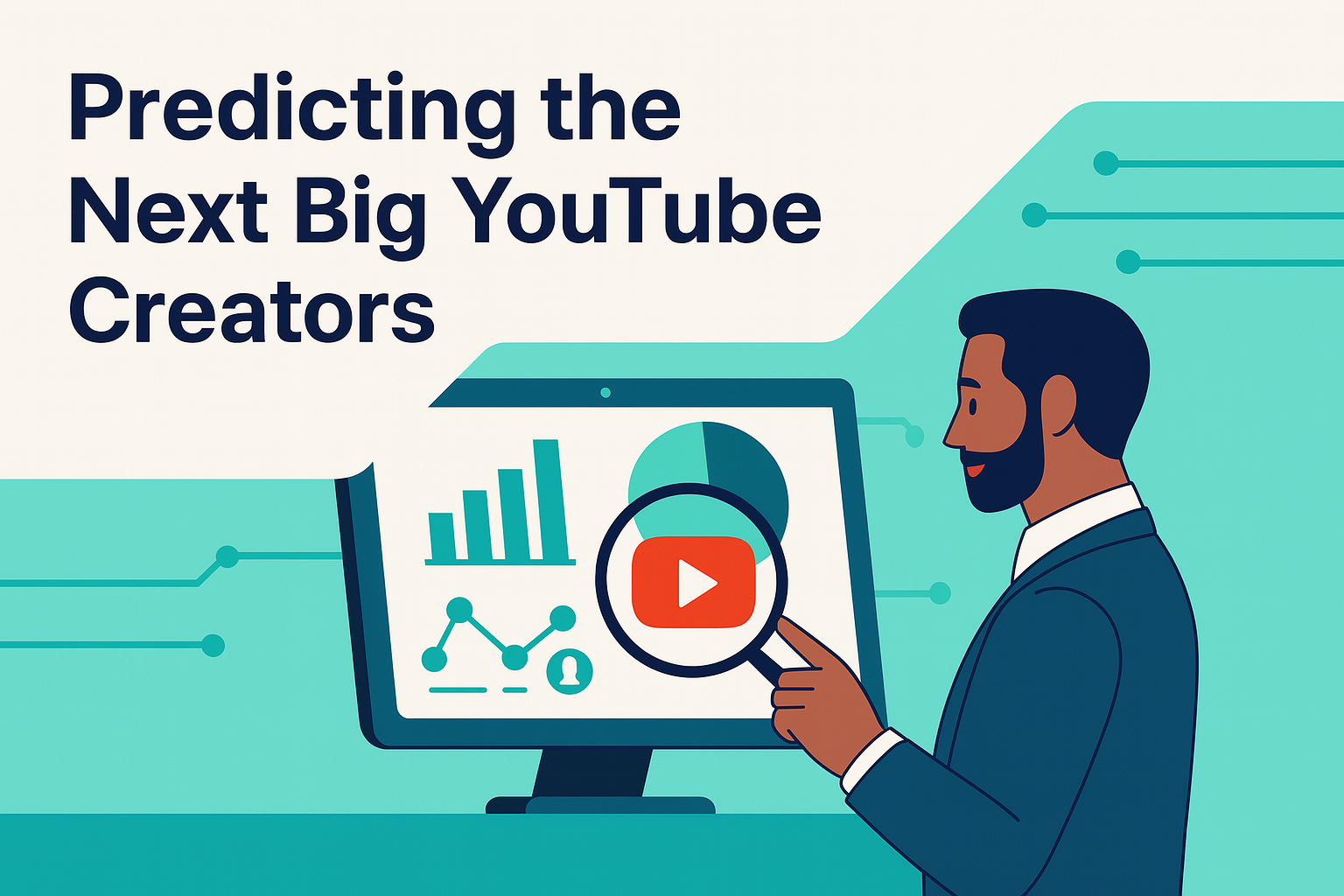Influencer marketing has gone from niche to mainstream, with brands increasingly shifting budgets from traditional ads to creator-led campaigns. Influencers build authentic connections with audiences, making them powerful partners for driving awareness, trust, and conversions.
But not all influencer partnerships deliver results. The right match can elevate your brand, while the wrong one wastes budget or hurts your image. That’s why knowing how to find and approach the right influencers is a must-have skill for modern marketers.
In this guide, you’ll learn:
- How to identify the right influencers for your goals
- How to find influencers on Instagram, YouTube, TikTok, Amazon, LinkedIn, and more
- How to reach out to influencers effectively
How to Identify the Right Influencer for Your Brand
What to Look For When Finding the Right Influencers
Choosing the right influencer starts with knowing what matters most. Focus on these key attributes to ensure your partnership aligns with your goals:
- Audience relevance and alignment: Do their followers match your target customer?
- Engagement rate: Are their followers actively liking, commenting, and sharing?
- Content quality and consistency: Is their style and tone a good fit for your brand?
- Platform fit: Do they perform well on the platform that aligns with your marketing goals?
- Brand voice alignment: Do their values, aesthetics, and communication style match your brand?
Understanding Influencer Tiers
Once you know what to look for, the next step is choosing the right influencer type. Different tiers offer different benefits based on your campaign needs:
Nano Influencers (1K–10K followers)
They are great for local campaigns or niche audiences. They have close relationships with their followers and often deliver the highest engagement.
Micro-Influencers (10K–100K followers)
They are trusted voices in their communities. Find micro-influencers to promote products with niche appeal or where authenticity is key.
Macro and Celebrity Influencers (100K+ followers)
They offer wide reach and are ideal for brand awareness campaigns, but they often have lower engagement and higher costs.
How to Find Influencers on Major Platforms
How to Find Influencers on Instagram
Instagram is one of the most influencer-driven platforms, and finding the right creators here is all about smart searching:
- Use the mobile app for more accurate and comprehensive results.
- Go to the search tab and type in a hashtag related to your industry.
- Browse through posts and review profiles manually to identify creators who align with your brand.
- Create a spreadsheet to track potential influencers and their metrics like follower count, engagement rate, and content style.
How to Find Influencers on YouTube
YouTube influencers are powerful partners for long-form content and product demos:
- Head to the search tab and type relevant hashtags or keywords.
- Look for videos that include these hashtags in their title or description.
- Evaluate channels based on subscriber count, content quality, and audience engagement.
- Keep in mind: YouTube prioritizes Shorts, so scroll past them to find longer content.
How to Find Influencers on TikTok
TikTok’s algorithm-based discovery makes influencer search a bit different:
- Hashtag searches show relevant content, not just posts with the exact tag.
- Click on a video using your target hashtag, then explore related videos and profiles.
- Analyze creators’ profiles, engagement rates, content style and frequency.
How to Find Influencers on LinkedIn
Ideal for B2B influencer marketing and professional niche audiences:
- Use LinkedIn’s search function to find thought leaders and industry experts.
- Filter results by engagement levels, follower count, and recent activity.
- Look for consistent posting and content that aligns with your brand’s tone.
- Evaluate their previous brand partnerships for credibility.
Find Influencers on X (Twitter)
Twitter/X is excellent for finding influencers in real-time discussions:
- Search for industry-relevant hashtags and trending topics.
- Use Twitter Lists to group potential influencers.
- Look at engagement on their tweets to assess impact.
Find Influencers on Amazon Live
For e-commerce brands, Amazon Live creators offer direct conversion potential:
- Visit amazon.com/live and explore the “Live Now” and “Recently Live” sections.
- Watch streams in your product category to evaluate presentation style, audience interaction, and professionalism.
- Click on the creator’s name to view their Amazon storefront and past livestreams.
- Search their name on Instagram, YouTube, or TikTok to check for cross-platform influence.
Other Ways to Find Influencers for Your Brand
Not all influencer discovery happens directly on social media. Here are two powerful alternatives:
Google Search
Google can be a surprisingly effective tool for discovering influencers across platforms:
- Use search operators like:
“site:instagram.com” + [keyword or hashtag]”
This narrows results to profiles on a specific platform. - Combine with terms like “influencer,” “creator,” or niche keywords to refine your search.
- Manually review the results and compile a list of profiles that match your criteria.
Influencer Discovery Tools
For a more scalable and data-driven approach, influencer platforms offer rich search capabilities:
- Choose a tool (like CreatorDB) that fits your goals, whether you’re targeting by location, industry, or audience demographics.
- Use filters such as platform, follower count, engagement rate, or content category.
- Browse detailed influencer profiles, including audience insights, growth history, and past collaborations.
- Save or export your favorite profiles to streamline outreach.
Many platforms also include features for campaign tracking and reporting to manage your entire influencer workflow in one place.

Find Your
Perfect Influencer
Match Instantly
How to Reach Out to Influencers
Once you’ve identified potential influencers, the next challenge is making contact:
- Research Contact Preferences: Some influencers list preferred contact methods in their bios or include a business email in their profiles.
- Craft Personalized Outreach: Generic templates rarely succeed. Reference specific content they’ve created and why you appreciate their work.
- Present Clear Value: Explain what’s in it for them beyond compensation (free products, exposure to new audiences, creative freedom).
- Be Transparent About Expectations: Clearly outline deliverables, timeline, and compensation from the start.
- Respect Their Creative Process: The best influencer partnerships allow creators to maintain their authentic voice while incorporating your brand.
Conclusion
Influencer marketing works best when the right creators meet the right brand. Whether you’re searching manually on platforms, or using discovery tools to streamline your process, success starts with finding influencers who truly align with your goals. With the tips and strategies in this guide, you’re ready to identify the right voices, reach out with confidence, and set your campaigns up for success.






